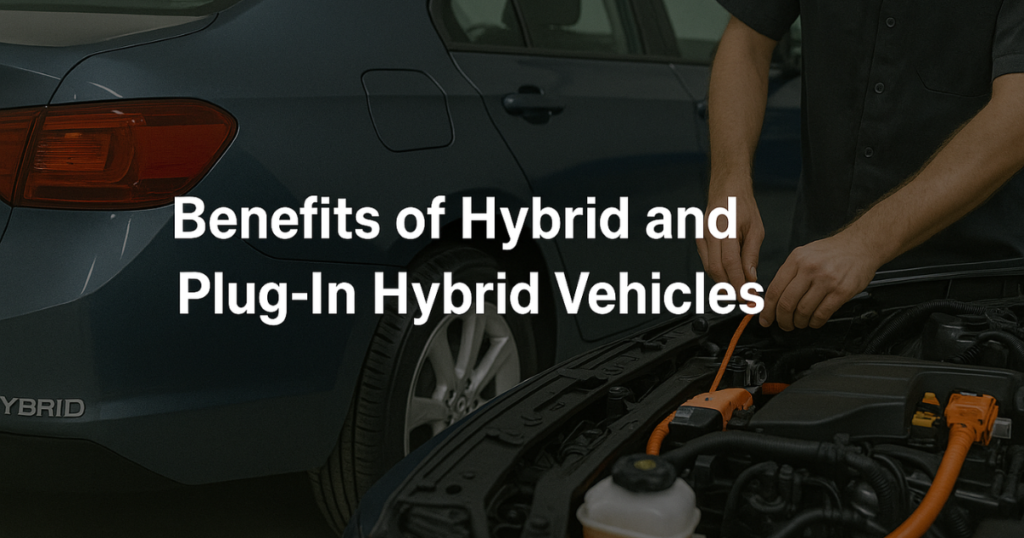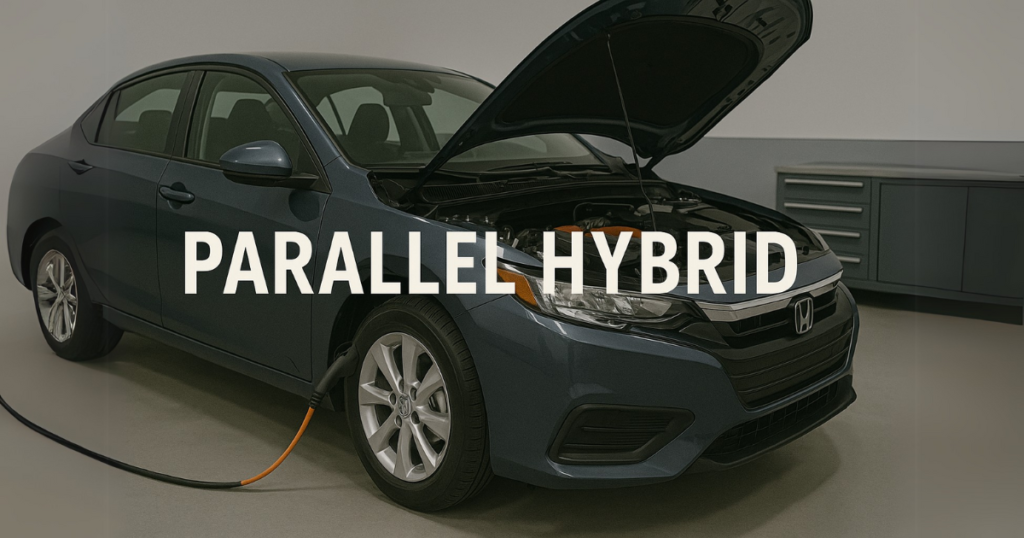What Is a Hybrid Vehicle & How Does It Work? | Hybrid vs Plug-In Explained
How To Safely Disconnect A Car Battery & Reset Your ECU | Step-by-Step Guide

What Is a Hybrid Vehicle and How Does It Work?
A hybrid vehicle uses both a gasoline engine and an electric motor to move. It can switch between them or use both to save fuel and lower emissions.
These cars are popular because they:
- Use less gas
- Are better for the environment
- Offer a smooth and quiet ride
- Include smart features like regenerative braking
Plug-in hybrid vehicles (PHEVs) are similar but have bigger batteries that you can charge. They can drive longer on electric power alone before using gas.
What Exactly Is a Hybrid Vehicle?
A hybrid vehicle is a car that uses both a gasoline engine and an electric motor to run. The electric motor is powered by a battery, and it helps the gas engine work more efficiently.
When you’re driving at low speeds or in traffic, the electric motor can power the car on its own. When you need more power, like when driving fast or going uphill, the gasoline engine kicks in. Sometimes, both work together to give the car extra strength.
This combination helps the car use less fuel, produce fewer emissions, and gives you a smoother drive overall.
How Does a Hybrid Vehicle Work?
Hybrid vehicles operate by intelligently switching between the gasoline engine and the electric motor, or using both simultaneously, depending on driving conditions.
Key Components:
- Gasoline Engine: Provides power at higher speeds and when extra power is needed.
- Electric Motor: Powers the car at low speeds and assists during acceleration.
- Battery Pack: Stores energy for the electric motor.
- Regenerative Braking: Captures energy during braking and stores it in the battery.
This system allows the vehicle to optimize performance and efficiency by selecting the most appropriate power source for each situation.
What Is a Plug-In Hybrid Vehicle?
A plug-in hybrid vehicle (PHEV) is similar to a standard hybrid but with a larger battery that can be recharged by plugging into an external power source. This allows PHEVs to drive longer distances on electric power alone before switching to the gasoline engine.
Key Differences:
|
Feature |
Standard Hybrid |
Plug-In Hybrid (PHEV) |
|
Battery Charging |
Regenerative braking |
Plug-in + regenerative braking |
|
Electric-Only Range |
Short (1-2 miles) |
Longer (10-50+ miles) |
|
Fuel Efficiency |
Good |
Better (with regular charging) |
|
Emissions |
Lower |
Even lower |
|
Charging Requirement |
No |
Yes |
PHEVs offer greater flexibility, especially for short commutes, as they can operate solely on electric power for extended periods.
Benefits of Hybrid and Plug-In Hybrid Vehicles

- Fuel Efficiency: Reduced fuel consumption leads to cost savings.
- Lower Emissions: Less harmful pollutants are released into the environment.
- Government Incentives: Potential tax credits and rebates for eco-friendly vehicles.
- Smooth Driving Experience: Quieter operation and seamless transition between power sources.
Common Types of Hybrid Systems
Understanding the different types of hybrid systems can help you choose the right one based on your driving habits and needs.
Full Hybrid (Strong Hybrid)
A full hybrid can run using:
- Just the electric motor,
- Just the gasoline engine,
- Or both at the same time.
These systems automatically switch between power sources depending on speed, load, and driving conditions. For example, it may use only electricity when driving slowly in a parking lot, and both systems on the highway for more power. These hybrids are very fuel-efficient and are commonly seen in models like the Toyota Prius.
Mild Hybrid
A mild hybrid uses an electric motor to support the gasoline engine but cannot run on electricity alone.
It helps during acceleration, improves fuel economy slightly, and allows the engine to shut off when the car is stopped (like at red lights). Mild hybrids are more affordable than full hybrids but offer fewer fuel savings.
Plug-In Hybrid (PHEV)
A plug-in hybrid has a larger battery than a regular hybrid, which can be charged by plugging it into an outlet or charging station.
This allows the car to drive longer distances on electric power alone, usually between 20 to 50 miles, before the gas engine turns on. PHEVs are great for short daily commutes, and you can save more on fuel if you charge regularly.
Series Hybrid
In a series hybrid, the gasoline engine doesn’t directly drive the wheels. Instead, it works like a generator, creating electricity for the electric motor, which does all the driving.
This setup makes driving feel smooth and electric-like. It’s more common in some commercial or extended-range electric vehicles.
Parallel Hybrid

In a parallel hybrid, both the gasoline engine and the electric motor are connected to the wheels and can power the car at the same time.
This is the most common hybrid setup. It gives strong performance and good fuel efficiency because both power sources can work together or separately, depending on what’s needed.
FAQs
What is a hybrid vehicle?
A vehicle that combines a gasoline engine with an electric motor to improve fuel efficiency and reduce emissions.
What exactly is a hybrid vehicle?
It’s a car that uses both an internal combustion engine and an electric motor to power the vehicle, optimizing performance and efficiency.
What is a plug-in hybrid vehicle?
A hybrid vehicle with a larger battery that can be recharged by plugging into an external power source, allowing for longer electric-only driving.
What is a hybrid vehicle, and how does it work?
It operates by switching between the gasoline engine and electric motor, or using both, depending on driving conditions, to maximize efficiency.
Is a hybrid better than a gas car?
Hybrids typically offer better fuel economy and lower emissions, making them more environmentally friendly and cost-effective over time.
Do hybrids save money?
Yes, through reduced fuel costs and potential government incentives, hybrids can lead to significant savings over the vehicle’s lifespan.
Conclusion
Hybrid and plug-in hybrid vehicles represent a smart transition toward more sustainable transportation. They offer improved fuel efficiency, reduced emissions, and a smoother driving experience without the range anxiety associated with fully electric vehicles. As technology advances, these vehicles continue to be an excellent choice for eco-conscious drivers looking to make a positive impact on the environment.
